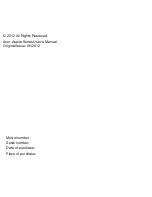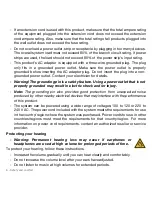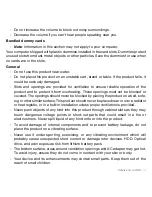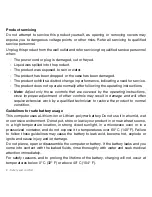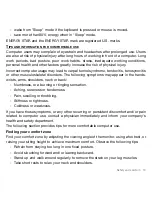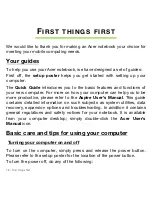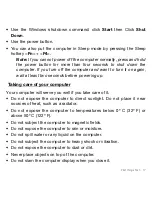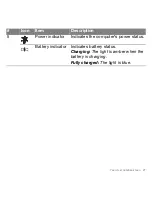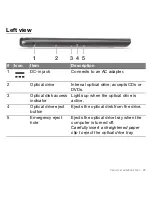
Safety and comfort - 13
wake from "Sleep" mode if the keyboard is pressed or mouse is moved.
save more than 80% energy when in "Sleep" mode.
ENERGY STAR and the ENERGY STAR mark are registered U.S. marks.
T
IPS
AND
INFORMATION
FOR
COMFORTABLE
USE
Computer users may complain of eyestrain and headaches after prolonged use. Users
are also at risk of physical injury after long hours of working in front of a computer. Long
work periods, bad posture, poor work habits, stress, inadequate working conditions,
personal health and other factors greatly increase the risk of physical injury.
Incorrect computer usage may lead to carpal tunnel syndrome, tendonitis, tenosynovitis
or other musculoskeletal disorders. The following symptoms may appear in the hands,
wrists, arms, shoulders, neck or back:
Numbness, or a burning or tingling sensation.
Aching, soreness or tenderness.
Pain, swelling or throbbing.
Stiffness or tightness.
Coldness or weakness.
If you have these symptoms, or any other recurring or persistent discomfort and/or pain
related to computer use, consult a physician immediately and inform your company's
health and safety department.
The following section provides tips for more comfortable computer use.
Finding your comfort zone
Find your comfort zone by adjusting the viewing angle of the monitor, using a footrest, or
raising your sitting height to achieve maximum comfort. Observe the following tips:
Refrain from staying too long in one fixed posture.
Avoid slouching forward and/or leaning backward.
Stand up and walk around regularly to remove the strain on your leg muscles.
Take short rests to relax your neck and shoulders.


